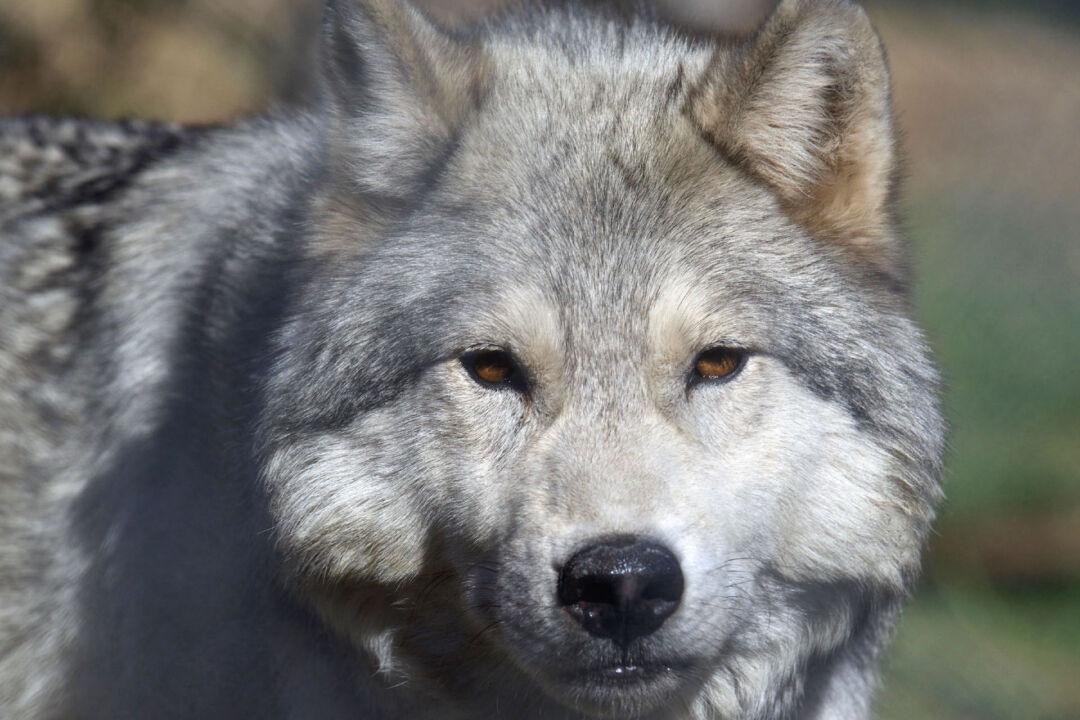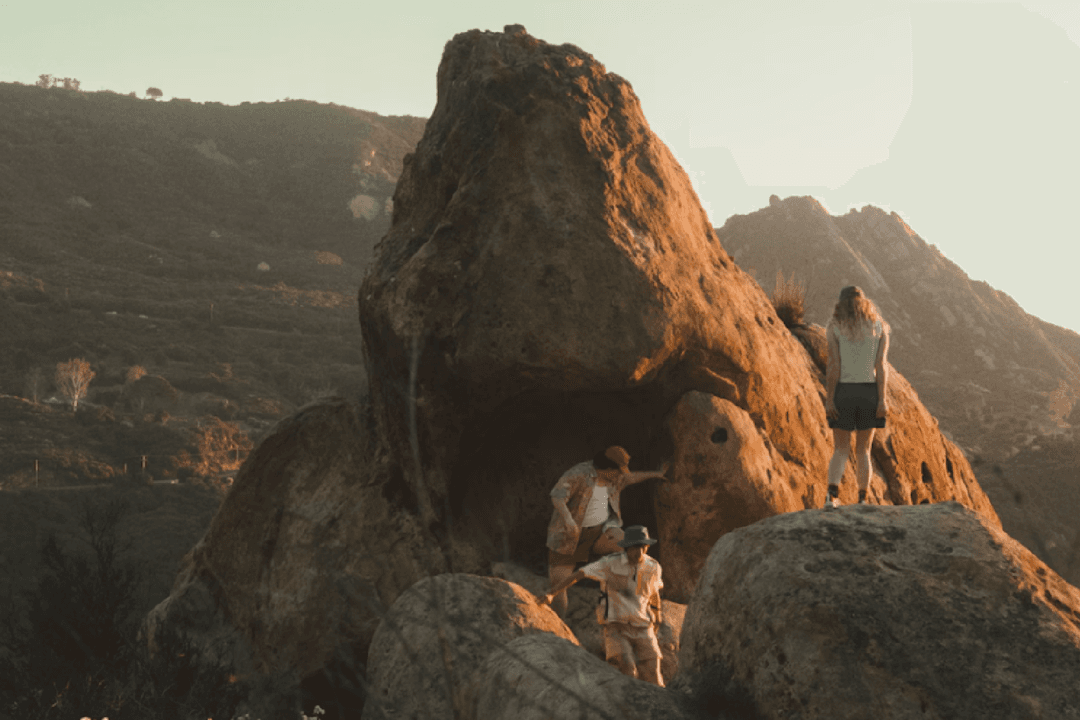Moving silently, its head hung low with curious eyes peering from a soft face of gray and white fur, a wolf appears from under the low-hanging wild oak trees and moves stealthily toward us, wary of our movements and voices. Another appears ambling behind, this one’s coat completely blond, both now sniffing the air.
They sense that visitors mean treats, just as a venison meatball lobbed toward them lands in the nearby scrub. They trot over to enjoy a snack, their long coats quivering in the wind blowing across the mountaintop, their large paws padding the earth, resembling two somewhat timid dogs more than the vicious wild creatures of scary movies.





